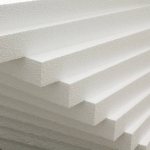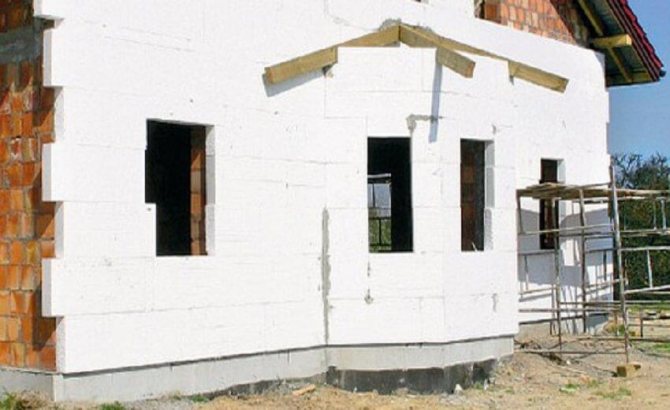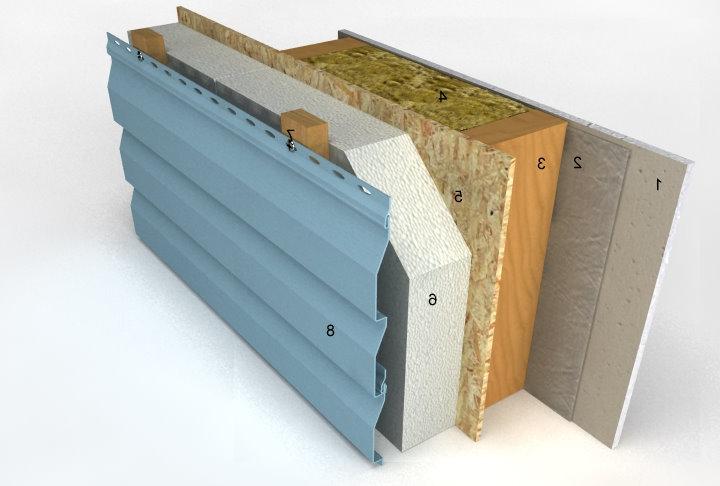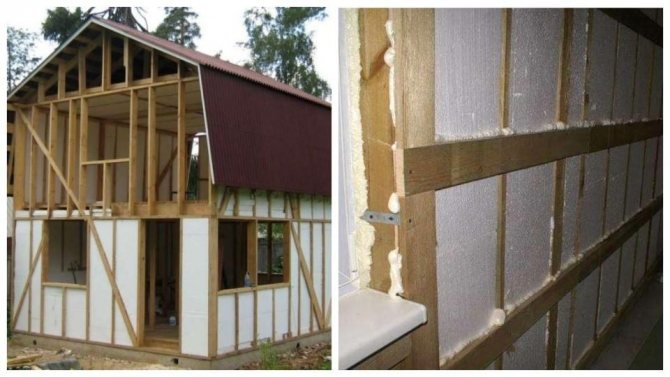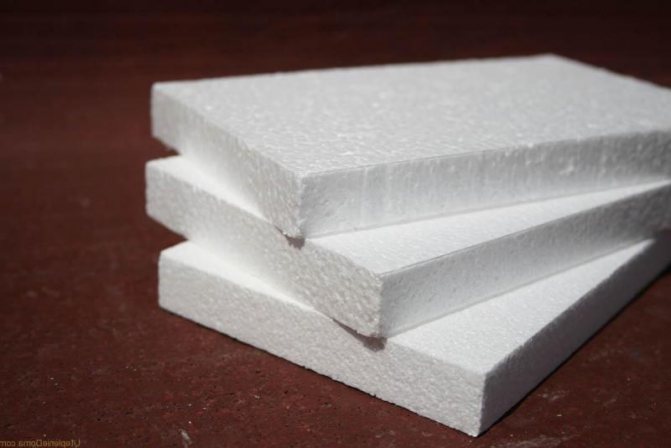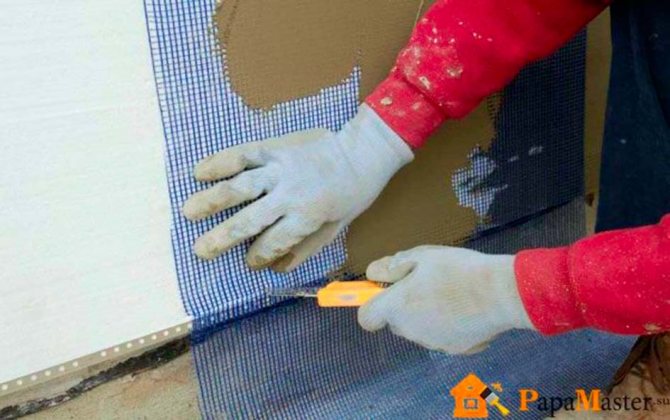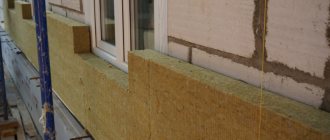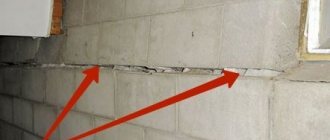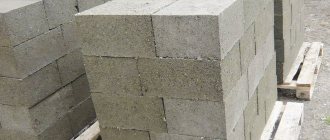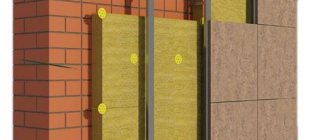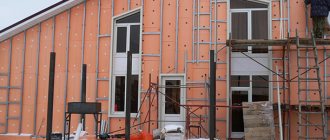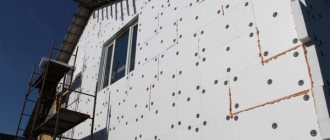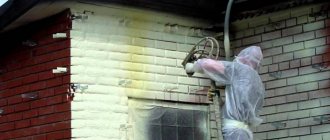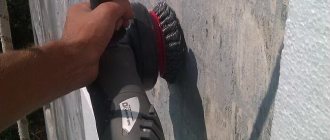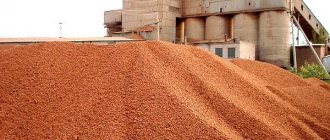Characteristics
Foam production was started more than eighty years ago. The first block was produced in Germany, after which it began to be used everywhere in various territories. Polystyrene balls serve as the basis for the insulation boards. Initially, they are elements with a dense structure that do not even remotely resemble foam. At the first stage of production, they are foamed. Next, the base is dried and aged, which is subsequently immersed in a special chamber, where it is sintered with steam at a certain pressure. At the presale stage, the foam is in large blocks that are cut to specification.
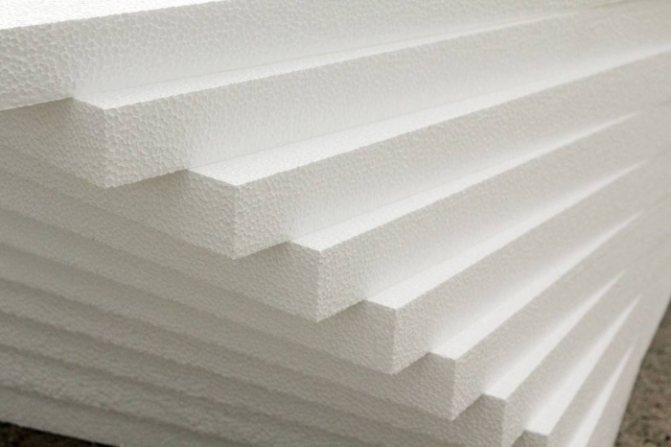
The size of a standard sheet that is used for insulation has a length and width of one meter, there are also options for a foam sheet with a half-width smaller. The most popular sheet size is 120 by 60 cm.The difference in types lies not only in size, but also in the density of the material. A density of 25 kg per cubic meter is considered normal for facade insulation. Plates with a density of 15 and 40 kilograms are also produced. This indicator directly affects thermal conductivity. The higher the number, the lower the thermal conductivity and the higher the price for the foam. A denser insulation can withstand heavy loads, so it is often used to insulate the floor.
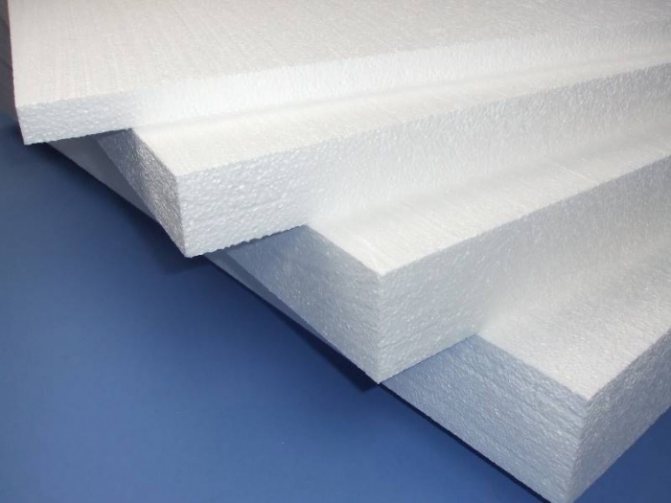

Due to the fact that the balls undergo preliminary foaming, this saturates them with gas, which determines the low thermal conductivity of the foam. Its indicator is in the range of 0.038 W / (m × K). Typically, the foam is produced in white, but in the process of making polystyrene beads, the manufacturer can add any pigment required to make his products stand out from other options. In some cases, extruded polystyrene foam and expanded polyethylene can also be called foam. These materials differ from polystyrene in the manufacturing method and the underlying material.
What is this material and its advantages
Polyfoam is produced by foaming and pressing polystyrene. As a result, a plate is obtained, which consists of many bubbles filled with air. Thanks to this structure, the material has gained popularity as a heater.
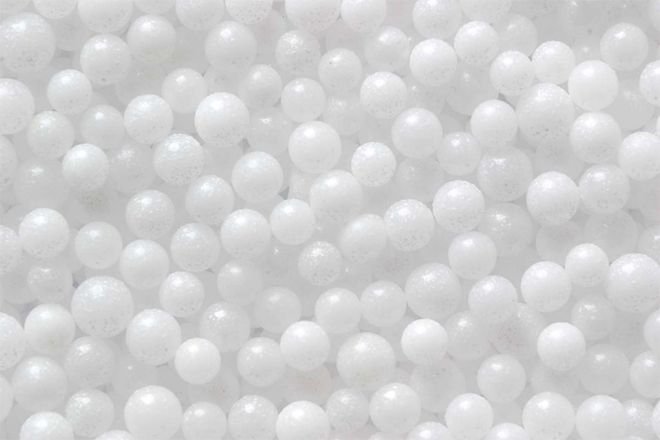

It has several positive characteristics:
- Little weight. The structure does not load the main structure and problems arise extremely rarely during transportation.
- Good level of thermal insulation. 1 cm of material lets less heat outward than 7 cm of red brick.
- Affordable price. The cost of foam is the lowest compared to other insulation materials.
- The material does not shrink even after prolonged use.


A close relative of foam is extruded polystyrene foam (EPS), which is produced in an extrusion autoclave. It is also used to insulate buildings.
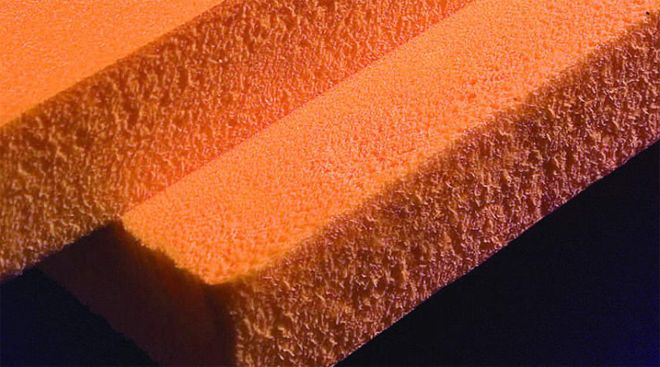

Properties
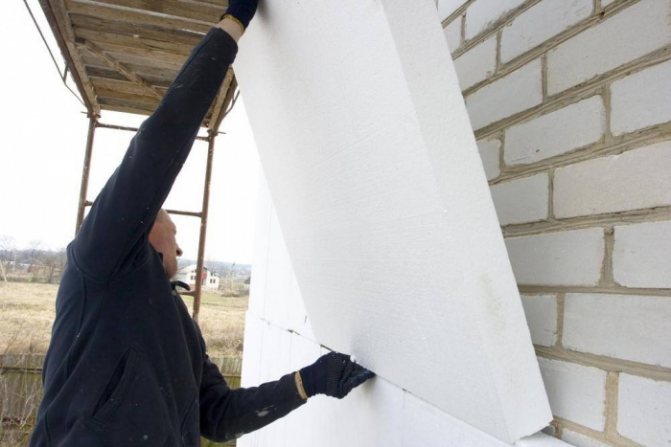

Based on the characteristics and experience of using foam, it is quite easy to highlight its strengths and weaknesses. The advantages of such an insulator include:
- minimum weight;
- ecological cleanliness;
- low cost;
- the possibility of self-assembly;
- the possibility of insulating various surfaces;
- ease of processing and fitting;
- resistance to biological processes;
- soundproofing properties.
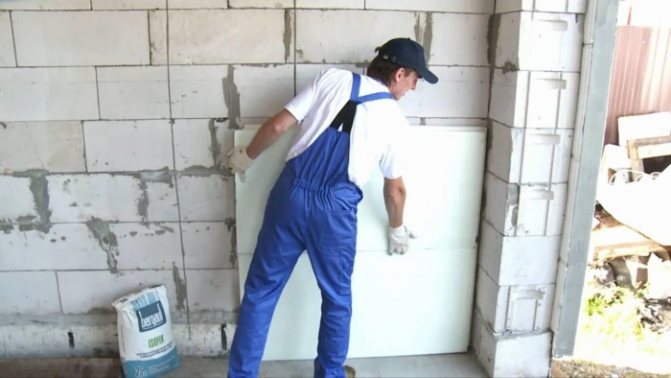

The solids in the foam are only a few percent compared to the total volume of gas contained in the material. This makes it lightweight.Thanks to this, the insulation is perfect for use with frame structures, since it does not exert significant pressure on the foundation and walls. This feature also simplifies the process of lifting the material to a height and self-assembly. Polystyrene is a polymer that, in its structure and composition, does not cause any harm to human health and the environment, if you do not eat it, so you can insulate the structure with foam without fear that harmful substances will start to be released from heating over time. The comparative cost of such a material is low, so it is suitable for low-budget insulation of temporary buildings.
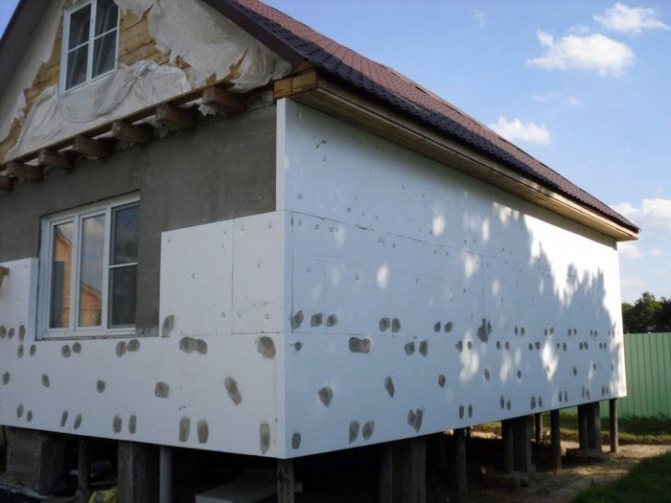

The installation of the material does not cause any particular difficulties, therefore it can be carried out without assistance. Due to its versatility, insulation can be performed on any available surface. At the same time, the foam does not react with most building materials, if you do not take into account organic solvents. Therefore, when laying foam on wooden, brick or concrete surfaces, there are no problems. The insulation can be processed with an ordinary knife or hacksaw, which simplifies the process of adjusting it to various shapes. The material of small thickness can take curvilinear shapes, therefore, insulation of semicircular bay windows is available. Polyfoam is an excellent insulation for the basement and foundation. This is due to the fact that it can be in the ground for many years without changing its properties, since it is not subject to decay processes and mold and fungus do not develop on the surface of the foam. A wall insulated with foam acquires additional soundproofing properties, which is also a positive effect.
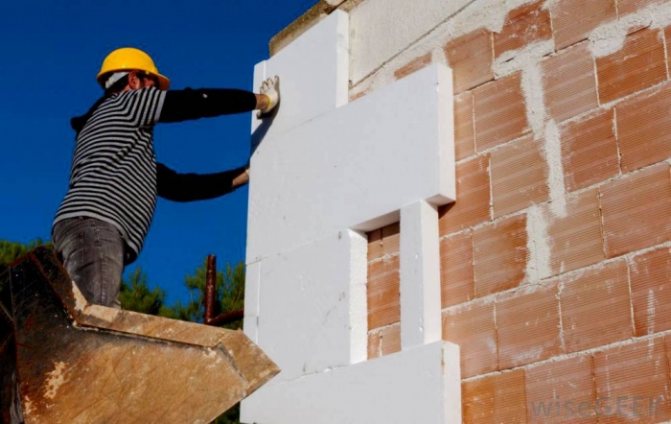

It is also important to know about the disadvantages, which, however, are covered by the existing advantages:
- instability to organic solvents;
- low mechanical strength;
- fire hazard;
- lack of vapor permeability.
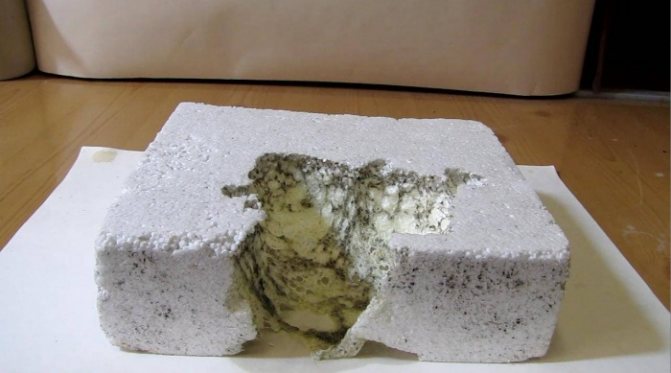

It is not recommended to use insulation during painting. Certain types of paints that are diluted with solvents can damage the material by decomposing it. A surface insulated with foam requires additional reinforcement by installing a fiberglass mesh in order to increase its strength, since even a slight mechanical effect can leave a dent in the material. Although fire retardants are added to the insulation during production, this does not make it absolutely fireproof. When exposed to high temperatures, the material melts with the release of carbon dioxide, but is capable of self-extinguishing. Due to the density of the material, air does not pass through it, which provides insulation from moisture, but creates a barrier during its outflow, which can result in the formation of mold under the insulation.


Note! Rodents can get inside the insulation slabs. Mice and rats do not eat it, but simply make passages inside, arranging a dwelling. Poultry also loves to peck on styrofoam, damaging its integrity.
High-quality insulation of walls with foam plastic from the outside with step-by-step instructions
There is not always a need for specialized equipment, but the established norms and the optimal technology for solving the problem must be constantly observed. Based on the reviews on foam insulation of the outer part of the house, we can make a simple conclusion that you need to follow a specific step-by-step action plan. Professionals consider this a rather laborious task, so it must be treated very responsibly. The sequence of wall insulation outside with foam plastic points:
- The sheets of material should be glued in the form of brickwork so that they overlap one-on-one in the middle. Each element must be completely coated with an adhesive mixture. A special anti-fungal impregnation is added to this glue beforehand.
- With the help of a construction float, all unevenness in the joints is removed to achieve a perfect surface. The minimum size slots must be filled.
- Next, a reinforced layer is applied using a facade mesh and an adhesive mixture. This allows the desired structural strength to be achieved.
- The reinforcing layer is the execution of the leveling surface using the same glue.
- Then a primer is carried out, which will be an excellent bonding element with the next layer.
- The final design stage is the installation of a decorative layer, for example, painting under a brick, modern plaster or jointing under a tile.
The opinion of professionals has always been considered relevant in many areas of human activity, so it is always better to take it into account. Of course, there are times when the attitude to a certain topic is divided, so it is necessary to carefully and adequately analyze all the statements. A full-fledged organization of heat in the house needs the right approach, so the choice of building materials is considered an important point. Preliminary consultations and reliable information can be the key to a high-quality implementation of a complex project.
Is it worth it to insulate from the inside
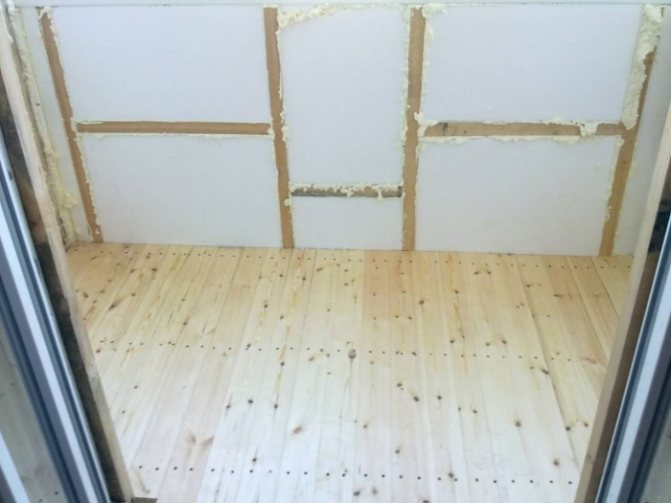

The question of insulating a house or other building with foam from the inside causes a lot of controversy, since it is difficult to unequivocally answer this question. It is worth saying that this method of foam insulation exists, but it also has opponents. The main argument is that heat-absorbing materials should be placed inside the room, since they absorb the ambient temperature, and the heat-insulating materials should be left outside so that they prevent the penetration of cold to the building materials. Insulation from the inside with foam is possible if you provide high-quality ventilation of the room, which will remove moisture in a timely manner, which will prevent the formation of mold. It is also important to calculate everything correctly so that the dew point does not shift towards the dwelling. In this case, due to the difference in air temperatures inside and outside, condensation will occur between the insulation and the wall, which will lead to the destruction of the blocks. A video of the process of internal foam insulation is below.
Benefits of Styrofoam
- Ease. It is possible to cope with the insulation of a frame house with foam plastic without helpers. Lightweight material slightly increases the load on the base, even when using thick slabs.
- Non-toxic. Environmentally friendly materials are used in residential construction. Expanded polystyrene is intended for direct contact with food, therefore it does not emit toxins.
- Moisture resistance. Polyfoam practically does not absorb water. When insulating a frame house externally, it is enough to take care of elementary waterproofing in order to avoid wetting the wooden racks.
- Form stability. Foam plates withstand serious loads during operation without undergoing deformation, therefore, they contribute to the preservation of the geometry of the insulated frame house.
- Thermal conductivity. Air-spaced materials are considered to be the most effective. A centimeter layer of polystyrene surpasses brickwork in heat-saving properties.
- Sound absorption. In addition to the thermos effect, the foam creates an excellent sound barrier. The noise level in an insulated house built using frame technology is noticeably reduced.
- Resistant to temperature extremes. Polyfoam fully retains its properties in the operating range from +50 to -50 ° C, withstanding summer heat, winter frosts and off-season without the risk of destruction.
Testimonials
“We used foam to insulate the roof of the garage, which is adjacent to the house. There are no complaints about the thermal insulation qualities of the material, since the temperature in the garage has increased significantly.The joints between the foam sheets were treated with adhesive foam to prevent cold bridges. The main problem is that there are mice in the foam. Especially at night you can hear how they move inside the insulation. Most likely, over time, the holes will become through, which will nullify all the insulation. We are not planning to use foam for other premises, so as not to observe the same effect. "
Julia, Moscow region
“By itself, foam is a pretty good insulation. But before using it, you should think about what specific needs the room has, which will be insulated. If there are problems with rodents in the area or in the house, then it is better not to use this type of material. It is worth using a different type of insulation even if there is high humidity and poor ventilation inside the room. Insulation material can be considered one of the cheapest and ideal for insulating city apartments, but it is not suitable for country houses and summer cottages. "
Elena, Yaroslavl
“I used polystyrene as insulation during construction. The first floor was finished before the frost, and the second remained unfinished, so I had to think about how to quickly insulate it. Around the perimeter, I stuffed a wooden beam from the outside as a crate for siding. Between it I laid foam plastic, gluing the joints with special foam. Siding was laid on top. In February, it was noticeable that the thermal insulation was working perfectly. I have experience in using such a heater, because two years before the house was insulated I used it for a change house and was satisfied with the result. The main disadvantage of the material is the destruction under the influence of ultraviolet radiation, as well as the fragility of the sheets. "
Evgeniy, Ufa
“The need for warming arose on the edge after a corner apartment in an old brick building was bought. In summer, the temperature was tolerable, but the first winter showed disappointing results. I opted for polystyrene on the advice of friends, who persuaded for a long time, praising the material. For four years after warming, no shortcomings were noticed. In winter, the surface of the wall remains dry, and in summer it is not too hot in the apartment. Thanks to the use of polystyrene, heating and air conditioning costs have been reduced. Over the entire period of use, no cracks or other damage appeared on the surface of the finish. "
Nikolay, Verkhnyaya Salda
“We are the owners of an end apartment with two walls facing the street. We decided to replace the old wooden windows with plastic ones, which worsened ventilation and led to the appearance of moisture on the walls in winter. Frequent airing did not give a positive result. Over time, cracks were noticed under the windowsill. It was decided to insulate the apartment. We were looking for suitable material from reviews on the Internet and opted for foam. Foam insulation was carried out in early autumn, so I was looking forward to a cold snap to test the effectiveness of the foam. In winter, the effect of wet walls is gone thanks to the foam, and the apartment has become noticeably warmer, which allows you to save on heating. The insulation was relatively expensive as the styrofoam was laid on two walls, but the result was worth it. The neighbors realized the benefits and decided to also use the insulation of the walls with the help of polystyrene. "
Elena, Saratov
How to fix insulation
So, we wait three days after gluing. Such a pause is needed for the following reasons: if you drill insulation, on which the glue has not yet dried, it can move away from the wall.
If you nail down "fresh", you can get into the recess under the foam and lift its edges. Then you will have to attract them additionally.
Nail the styrofoam with special fungi - plastic circles-caps with a sleeve-leg, as well as nails that are hammered into such sleeves. The insulation is attached like this:
- select a site and drill holes in it with a 10 mm perforator;
- the depth of the hole should be 2 cm longer than the length of the fungus;
- drive in the fungi.
The best option for hole placement is in sheet joints, and one hole in the center of the sheet. There are up to 6 fungi per leaf. It is better because of the fungus the joint is additionally pressed, it becomes smoother and tighter to the wall.
Regardless of how the fungi are placed, in one plane it is imperative to nail the sheets 5-10 cm from the edge.
The fungi are inserted and hammered into the hole without nails, you can use a hammer. You need to hammer so that the hat is on the same level with an insulation surface. When all the fungi are clogged, hammer in special nails, while the fungi may move a little inward.
A normally clogged fungus is immersed in the insulation for a couple of millimeters. If it sticks out a little, you can cut it off with wire cutters.
Next, you need process the joints of the insulation and fungi. If their size exceeds 5 mm, they need to be replaced, if they are even larger, then insulation strips should be laid there and additionally covered with foam. The foam dries for about five hours, then its remains are cut off.
You can also correct protruding joints with a foam trowel. She will remove the protruding areas, and the joint will become even. This applies to foam sheets.
Then the joints of the insulation and the caps of the fungi follow overtighten with glue mixture with a large spatula. Places of screeds must be level. If there are small performances, they are rubbed with a plastic float after drying.
How to glue and nail insulation from two sheets
Sometimes foam is used in two layers in order to eventually get the desired thickness. The sequence of gluing and nailing insulation in this case will be as follows:
- The first layer is glued, as in the previous case.
- We glue the second layer onto the first board to cover the joints.
- We use the mixture for gluing the plates. When gluing the second layer, it is better to apply the mixture to the sheet, and not to the wall.
- The mixture is applied under the comb in an even layer and pressed against the wall.
- On the first layer, the joints can not be foamed or rubbed, but it is necessary to remove the protruding mixture from the joints. The joints are rubbed and foamed only after nailing the second layer.
- After the second layer is glued, nail the insulation with fungi.
- If Epps is used for insulation, then the sheets must be processed on both sides with a needle roller.
Does not drain moisture from under the floor
Aleksey Galimov notes that regardless of whether the floor screed is insulated or not, it is imperative to ensure the complete removal of moisture from under the wooden flooring. It is better if there is a screed under it, along which the water rolls into the funnel and is discharged into the drainage. In some cases, you can come to terms with the fact that water spills through the boards and soaks directly into the soil. But this option is only suitable for soil with good permeability.
Nevertheless, builders admit that it is very difficult to completely protect wooden structures adjacent to the floor from mold, especially if the bath is "cold" - that is, it is not constantly heated. To extend the service life of the bathhouse, you have to go for tricks.
Recently, during the construction of baths, customers have proposed to completely abandon wood flooring in the steam room and sink.
During the construction of a wooden bath, not only specific "bath" mistakes can be made, but also miscalculations characteristic of the construction of log cabins in general. Divandi wrote earlier about the worst mistakes in wooden construction.
Metallic foil and mineral insulation are suitable for warming the steam room.
Comparative characteristics of the use of various types of insulation for frame houses
The walls of frame houses with cotton wool have a thermal resistance 1/3 times worse than those of houses with walls made of PENOPLEX® insulation, because cotton wool is located between the posts, which are "bridges of cold".If PENOPLEX® is fixed outside the racks with a thickness of 30 mm, then the reduced resistance to heat transfer will increase by 30%, and if instead of a cotton insulation we choose an insulation for a frame house from PENOPLEX outside the racks, then we will get an improvement in the thermal protection of the building by 50%.
Option number 1 (only cotton wool):
- Imitation of a bar;
- Vapor barrier;
- LVL stand 150 x 50 mm;
- Space between racks of cotton wool extra 150 mm;
- OSB 9 mm;
- Moisture and wind protection;
- Imitation of a bar.
Thermal heterogeneity coefficient 0.663
Reduced heat transfer resistance = 2.7 m2hgrad / W
The reduced heat transfer resistance of the structure is R = 2.674 m2 оС / W (corresponds to approximately 80 mm PENOPLEX®).
Additionally, you will need at least 20mm of mineral wool (thermal conductivity coefficient 0.042W / mK).
Option number 2 (mineral wool + PENOPLEX®):
- Imitation of a bar;
- Vapor barrier;
- LVL stand 150 x 50 mm;
- Mineral wool space between 100 mm;
- On the racks on top of Penoplex comfort 30 mm with gluing of the seams with construction tape;
- Imitation of a bar;
Thermal heterogeneity coefficient 0.857
Reduced heat transfer resistance = 3.43 m2hgrad / W
Option No. 3 (PENOPLEX® 100 mm):
- Imitation of a bar;
- Vapor barrier;
- LVL stand 150 x 50 mm;
- Space between stands without insulation with electrical wiring + ventilation;
- On racks on top of Penoplex Comfort® 100 mm with gluing of seams with construction tape + plastic mushrooms with a metal core 4 pieces per 1 m2;
- Imitation of a bar;
Thermal heterogeneity coefficient 0.977
Reduced heat transfer resistance = 4.0 m2 x deg / W - the best option for thermal resistance
The walls of a frame house with wool and PENOPLEX® are 42% cheaper than just with wool with the same thermal resistance.
Estimated cost of 1m2 for structures: Option 1. About 936 rub / m2 by materials (taking into account additional insulation with 20mm cotton wool: + 33r / sq.m., i.e. total: 903.5 + 33 = 936.5r / m2.) Option 2. About 658 rubles / m2 the best insulation option for frame houses at a priceOption 3. About 808 rub / m2

